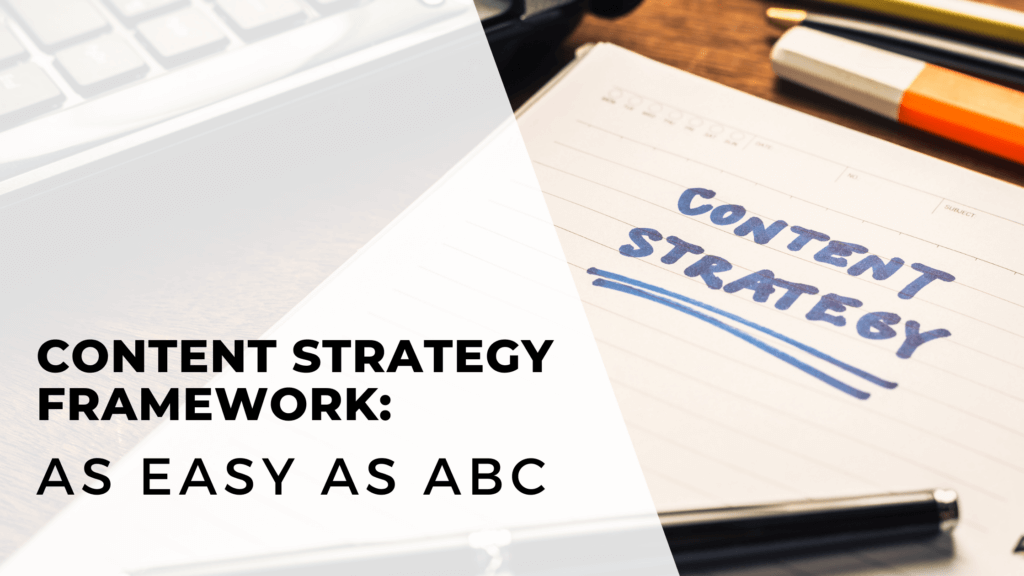
Content is one of the most important parts of your business goals as a female entrepreneur. No matter the industry that you’re in, it’s crucial to create a content strategy that resonates with your target audience and empowers them to take action. It’s also important to track and measure your efforts to make sure your strategy is paying off.
But, where do you start? Right here. I’ll outline the components of a successful content strategy and provide tips and tricks for crafting one that works for you. A custom-tailored content strategy that works specifically for your business, your ideal target buyers, and your lifestyle.
AFFILIATE DISCLAIMER: I SOMETIMES LINK TO PRODUCTS AND SERVICES TO HELP COVER THE COSTS OF RUNNING THIS BLOG. THERE’S NO EXTRA COST TO YOU – AND I ONLY RECOMMEND PRODUCTS THAT I’VE BOTH USED PERSONALLY AND THINK ARE QUALITY PRODUCTS THAT HELP WITH EFFICIENCY. PLEASE READ MY AFFILIATE DISCLOSURE FOR MORE INFORMATION. THANKS FOR YOUR SUPPORT!
Table of Contents
- Why is it Important to Have a Content Strategy Framework?
- 1. A- Audience: Understanding Your Customers’ Needs
- 2. B- Business Goals: What goals should your content support?
- 3. C- Create Engaging Content: Capture Your Readers’ Attention
- 4. D- Distribution: Make Your Content Reach the Right People
- 5. E- Expansion: Repurpose and Reuse Content
- 6. F – Facts and Figures: Track Your Progress and Adjust Your Strategy
- Bonus: Leverage Multiple Content Formats
- Bonus: Establishing a Content Calendar: Staying on Track in the Digital Age
- The Most Important Step: Building a Sustainable Content Strategy
- Conclusion
Why is it Important to Have a Content Strategy Framework?
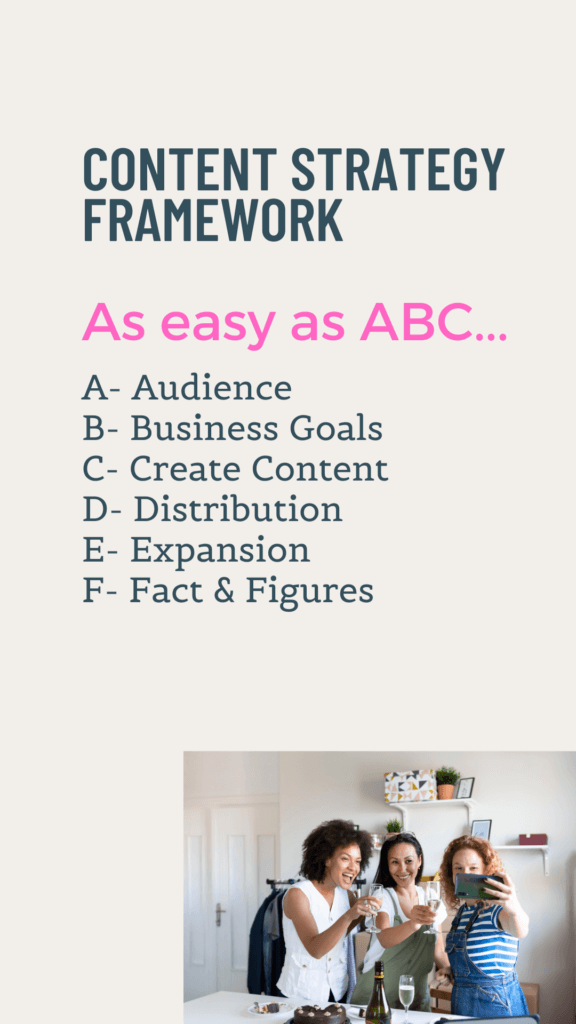
So, why is it important to have a content strategy framework for your online business? If you’ve ever found someone online (social media, blog, podcast, whatever platform you’re on), and you absolutely love one of their posts.
It instantly resonates with you, and you decide to follow them. But then they stop posting about that topic. Well, they aren’t following a content strategy. They’re most likely sitting down to create content daily and coming up with topics as they go. They’re doing it on the fly.
But that’s how people go off track with their content and are creating content just to appease an algorithm with constant posting, not consistent posting.
Consistent posting isn’t just posting a specific number of posts on specific days. It’s having a schedule of creating and distributing your content AND keeping the topic of that content consistent.
That’s why you hear people say “Find a way to say the same thing, in 1,000 different ways.” That’s really what you’re doing. You keep using the same message in different ways because it takes more than one touch point to get someone to buy.
And most social platforms have very low organic reach, so each post is only seen by a small percentage of your followers. Let’s move on to the 6 steps for setting up a successful content strategy.
1. A- Audience: Understanding Your Customers’ Needs
It’s also important to consider the audience you are targeting with your content. Knowing who you are trying to reach will help you create content that resonates with them and encourages them to take action.
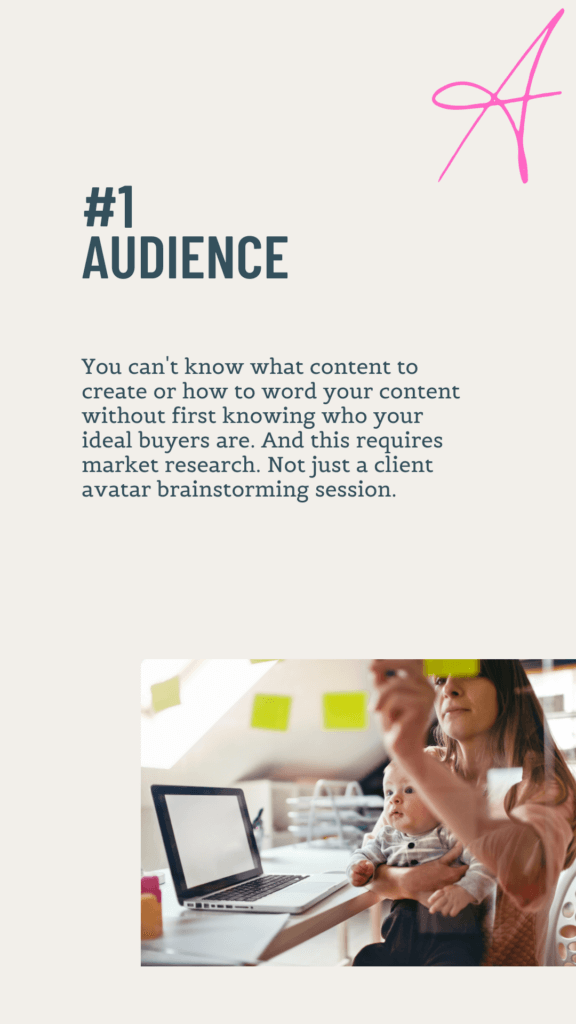
This could include signing up for a newsletter, downloading a free resource, or making a purchase. Understanding your audience will help you create content that is tailored to their needs and interests.
And tailored content converts better. It converts easier. All because it resonates with your audience.
You can’t do a 5-minute brainstorm with clarifying questions like most “gurus” suggest. You have to actually do the research and look at data with facts and figures. Those clarifying questions are a very small part of the research phase.
Just a few words of advice. Don’t skimp on your research. Your content will suffer if you do.
Get to know your audience better, learn how to phrase profile your ideal buyers, get better keywords for your SEO efforts, and more. It’s all packed into one easy-to-use, and quick to complete guide. Fill it out as you go for a content plan that creates natural engagement with less frustration.
It’s time to stop spinning your wheels and actually start making progress with your organic content.
Grab your Market Research Guide & Workbook.
2. B- Business Goals: What goals should your content support?
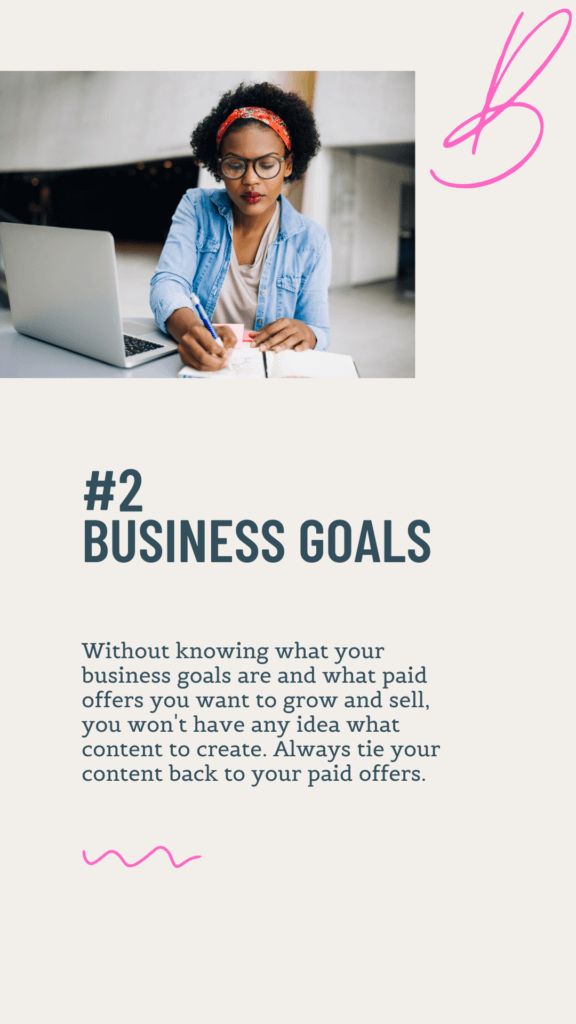
The second step towards crafting an effective content strategy is to define your business goals. These should be specific, measurable, and achievable goals that focus on both the short-term and long-term success of your online small business.
Think about the overall goals you have for your business in the next year. This will help you form the basis of your content plan and ensure that your content efforts are focused on reaching those goals.
What does that mean? It means every piece of content you create will tie back to your business goals. Your content will target the right people because you’ll follow one strategy that’s geared toward moving your business forward in very specific areas.
When setting your goals, it’s important to consider the resources you have available. This includes the time and money you have to invest in your content strategy, as well as the skills and expertise of yourself or your team.
Knowing what you have to work with will help you set realistic goals that are achievable within the given timeframe and budget, without the stress and burnout.
As a solopreneur, you especially want to think about your time.
How much time will it realistically take to do the the things needed to reach those goals? Can you do it by yourself? How does your content fit into this strategy? Do you need tools to create your content, and how much will those tools cost?
3. C- Create Engaging Content: Capture Your Readers’ Attention
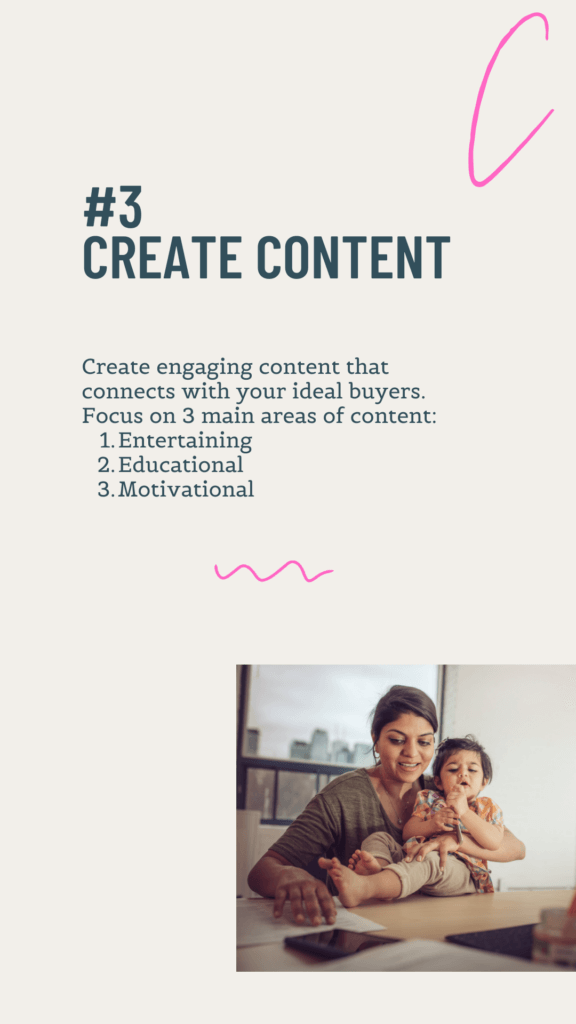
Once you have an understanding of your audience and your goals, it’s time to create engaging content. This could be blog posts, videos, podcasts, infographics and more. Whichever platform you’re already on will be the easiest to continue with.
And I know you’ve heard “The time to get on (insert newest social media platform) is now!” I’m here to tell you, it doesn’t matter what platform you’re on. They all work. They do.
So don’t worry about being on a platform that you hate just because it’s being called the next best move for online entrepreneurs or mom entrepreneurs. In fact if you hear that, go to their website. Look for their digital products or online courses. I guarantee they sell a course or digital product for that specific platform.
Okay, now that I got that rant over. 🙂 Let’s keep going.
Regardless of the format or platform you choose, make sure your content has a purpose and provides value to your audience. Then, optimize your content for search engines, as this will help you reach more people.
Create content that encourages readers to engage with it, such as asking questions or offering freebies. Quizzes and polls are also great for creating engagement. Essentially, you want to create content that gets your audience interacting with it and thinking. Keep them curious.
Freebies and lead magnets are a great way to show what you know, your style of teaching, and how much you truly want to help them succeed. Plus you can grow your email list with a good freebie.
Make sure your content is easy to read and understand. Being clever is never as good as being understood. Make your content clear and easy to understand.
And if you can find a way to be clever and still easy to understand, that’s the sweet spot.
And be sure to consistently keep your content relevant to your audience and to the time (even better, keep it evergreen so it’s always relevant).
Use visuals to break up text and make any piece of content more engaging. And this is true for any online platform that you’re using. Images, videos, and infographics can help to draw readers in and keep them interested.
Make sure to include a call to action at the end of your content, such as asking readers to share their thoughts, sign up for your newsletter, or even simply “follow for more.” If you don’t ask or tell them the next step, they’ll automatically think the next step is to leave your website or scroll to the next reel, carousel, etc.
With every new piece of content as yourself “Why would my audience want to read this?” Once you’ve asked that. Then ask, “But why is this important?”
How to create Engaging Content:
- Create purpose-driven content
- Always provide value to your audience
- Optimize your content for search engines
- Encourage engagement with by asking questions and creating quizzes or polls
- Use freebies (lead magnets) to show what you know and grow your email list
- Make sure your content is easy to read and understand.
- Keep your content relevant to your audience and to the time (even better, keep it evergreen)
- Use visuals (infographics, images, videos) to break up text and make any piece of content more engaging
- Make sure to include a call to action at the end of your content (ask readers to share their thoughts, sign up for your newsletter, or follow for more)
- With every new piece of content as yourself “Why would my audience want to read this?” and “But why is this important?”
As you already know, creating engaging content is an important part of any successful marketing strategy. By following the tips and tricks outlined above, you can ensure that your content is interesting, informative, and relevant to your readers. With the right approach, you can capture your readers’ attention and keep them coming back for more.
Related Article: The Power of Storytelling in Content Marketing
4. D- Distribution: Make Your Content Reach the Right People
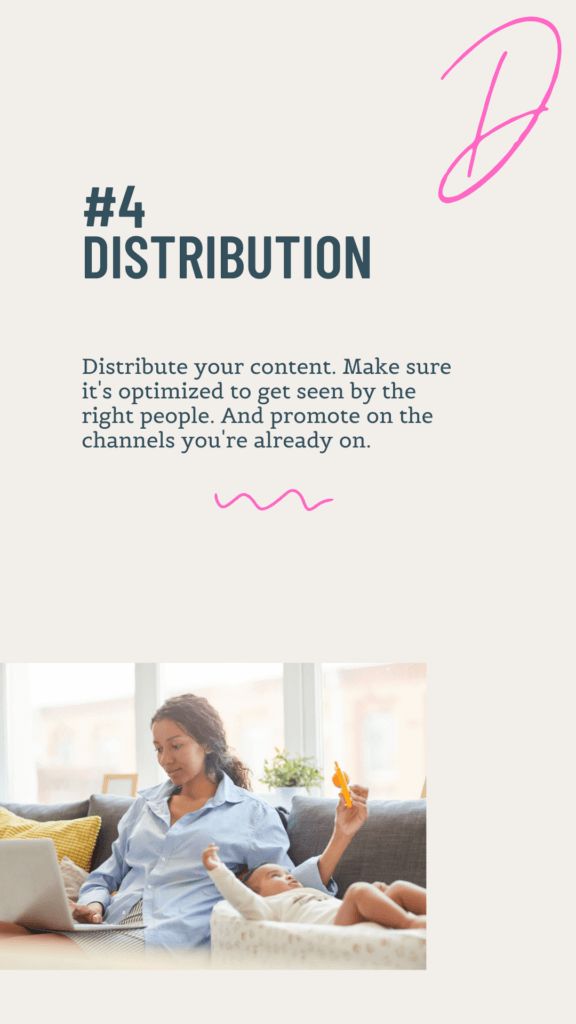
Once you’ve created engaging content, it’s important to optimize it so that it reaches the right people. This involves ensuring that your content can be easily found by those who need it through various means.
This could include:
- Optimizing your content with SEO-friendly keywords for search engines
- Creating a website that’s user-friendly and ready to convert readers into buyers
- Publishing content on relevant forums
- Promoting content on social media channels
- Partnering with other business owners with a similar niche or audience
When optimizing your content, it’s also very important to consider the user experience. This means making sure that your content is easy to read and navigate, and that it’s optimized for the device it’s being viewed on.
For example, on mobile you don’t want a lot of pop ups getting in the way of the screen making it hard to navigate. I was just looking at a new digital product shop on my phone this morning. As I scrolled down the page everything was fine.
But as I scrolled up, a pop up came on the screen to spin this big wheel for a chance to win a discount (and give them my email). While these pop ups aren’t always bad, this particular one was setup to pop up every time I scrolled up. Over and over again. I couldn’t scroll back up to the top of the page without spinning the wheel. I’m sure this was an accident, but it made for a very poor user experience.
Related Article: What is a Content Distribution Strategy?
5. E- Expansion: Repurpose and Reuse Content

Creating quality content that reaches the right people and sells your offers takes time. So it’s important to make sure you’re working as efficiently as possible. That means recycling and repurposing content.
This could involve taking a blog post and turning it into multiple social media posts, a carousel on LinkedIn, an email newsltter (or mutliple email newsletters), and even creating a longform YouTube video script from the blog post.
By repurposing or reusing your existing content, you’ll be able to minimize the time and effort required to create new content. Just be careful when adding this, so you don’t do too much too soon. If you want to start right away and need a tool to help get the job done easier and faster, I highly recommend Repurpose.io.
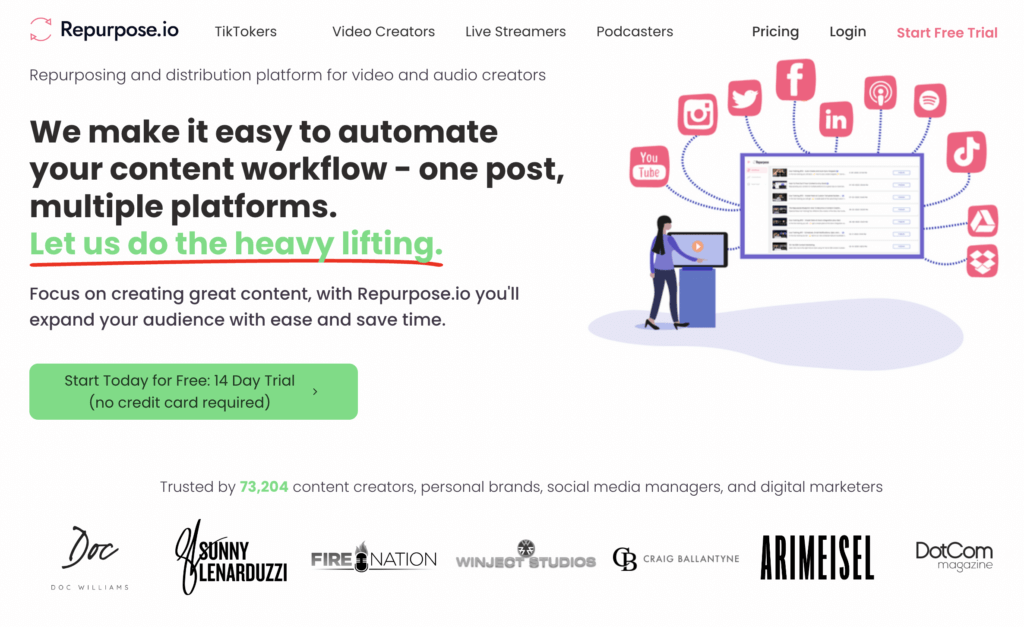
Using this tool is an easy way to automate the process of turning one piece of content into many. They have videos to walk you through the process, and clicking my link will get you 14 days free of Repurpose.io without a credit card. So go ahead and try it out and see if it’s the right fit for you. And if not, no harm done and no credit card to cancel. It’s as easy as that. Try Tepurpose.io for free today.
Related Article: Creating an Effective Content Repurposing Workflow
6. F – Facts and Figures: Track Your Progress and Adjust Your Strategy
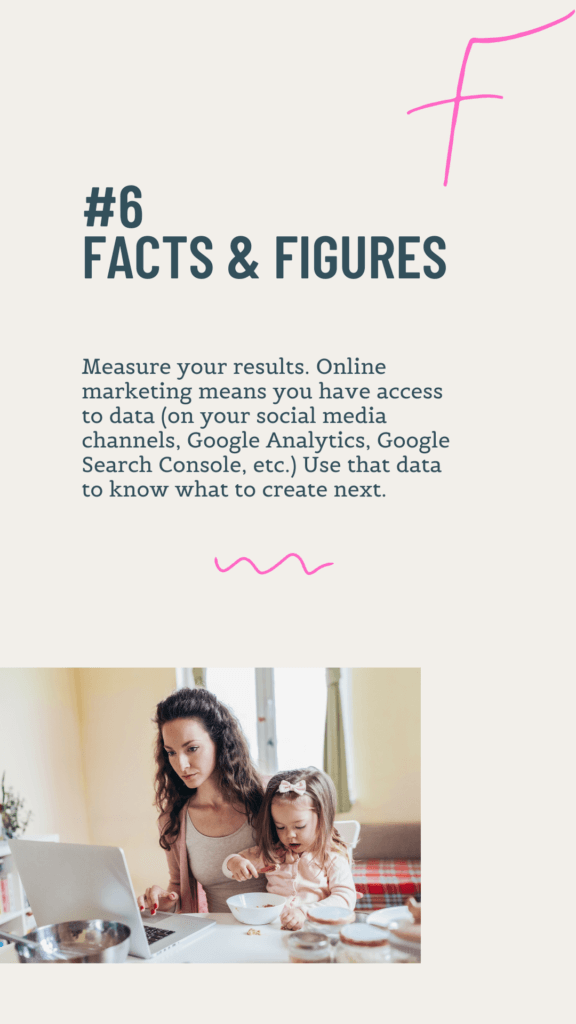
Once you have your content plan in place, you need to track and measure what works and what doesn’t. This involves gathering data on various elements such as engagement rates, reach, conversions, referral traffic and more. With this information, you can adjust your content strategy in order to maximize its effectiveness. Additionally, note the type of content pieces that yield the best results so you know what works well and can create more of that.
Once you have your content plan in place, you need to track and measure what works and what doesn’t. This involves gathering data on various elements such as engagement rates, reach, conversions, referral traffic and more. With this information, you can adjust your content strategy in order to maximize its effectiveness.
Additionally, note the type of content pieces that yield the best results so you know what works well and can create more of that.
It’s also important to track the performance of your content over longer periods of time, like a year. This will help you identify trends and patterns in your content and allow you to make more informed decisions about your content strategy as you go. You can always make adjustments to your content plan. I suggest looking at your results quarterly and making small adjustments at that time. Then, each year you’ll want to dive into your content plan and make any bigger changes at that point.

Now for a few bonuses to your content strategy. These are more nice to have additions to your content plan, not necessarily have to have.
Bonus: Leverage Multiple Content Formats
My least favorite aspect of a content strategy is leveraging different platforms. It isn’t because it isn’t good to have variety in your content strategy framework. It actually is good to have variety in your content (where and what type of content you post). But I don’t like this part of a content strategy because people start to try for too much variety, too soon.
Yes, you can reach a wider audience, but you can also spread yourself too thin. Even to the point of burnout. Remember what I said above about every platform works? It does. It truly does.
And once you’re ready to leverage more online platforms, here’s how you’ll do it.
Think about blogging. So many people say blogging is dead, but there are bloggers still making 5 or even 10 grand per month and more. No, that isn’t overnight success, but that’s solid money and with less of a time investment than constantly posting for a social media algorithm. And there are influencers with millions of followers, yet they don’t know how to monetize that audience. It isn’t the platform, it’s the content strategy that makes or breaks the bank.
Get your free guide from Repurpose.io for repurposing your content with ease. This is the platform that I use myself. I’ve been repurposing content as I go, using Repurpose.io. This way I have a backlog of content to use on other platforms once I decide to expand to more social platforms.
That means I can start on a new platform and come out of the gate strong with lots of content to make the algorithm happy. That works so much better than trying to start on a new platform and create everything as I go. Now, that’s how most people reach burnout so quickly. A backlog of content is one of the best “content hacks” I can give you.
And lastly, once you decide to leverage other platforms and expand your online reach, make sure the platforms you add to your content strategy go along with the life you want to live. And the tools you use help you to automate the process, so you can work less while getting more done.
Not sure which tools to use to get the job done easier? Check out The Benefits of Using a Content Repurposing Tool.
Your content strategy needs to fit your personal life just like it needs to fit your business and your audience.
Bonus: Establishing a Content Calendar: Staying on Track in the Digital Age
Creating a content calendar is another area of a content strategy that can make things just a little easier. In all honesty, you don’t have to have a content calendar, but it’ll definitely help you plan out when you’ll create content and when you’ll post it online.
It also gives you an at-a-glance view of your content efforts, so you can easily spot any gaps or areas for improvement in your strategy. Determine how often you plan to post content and set aside time for creating, curating and optimizing it.
The Most Important Step: Building a Sustainable Content Strategy
Finally, it’s important to create a sustainable content strategy framework. I’ve mentioned this throughout this article because this is the most important step to ensure you don’t burnout and quit. I just wanted to highlight it here as well.
This involves regularly assessing how effective your current efforts are and making adjustments accordingly. You should also stay on top of emerging trends and technologies that could help improve your overall strategy and better engage with potential customers. But make sure you’re also factoring in your lifestyle and your time to create the content. Burnout is real.
Conclusion
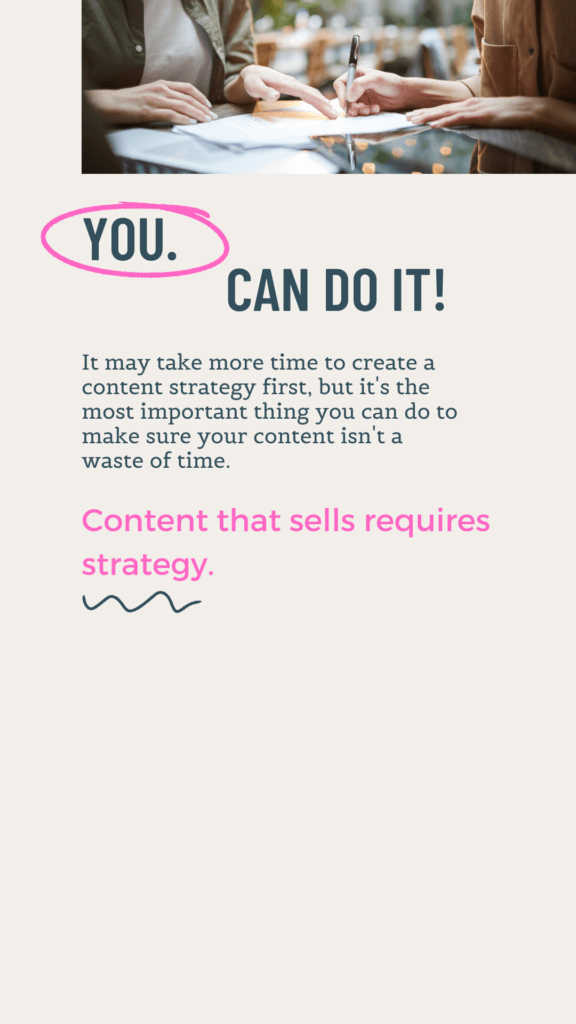
Crafting an effective content strategy plan doesn’t have to be a daunting task. It just takes… well, planning and research. By following the tips outlined above and tracking your progress regularly, you’ll be able to create a content strategy framework that yields powerful results for your online business.
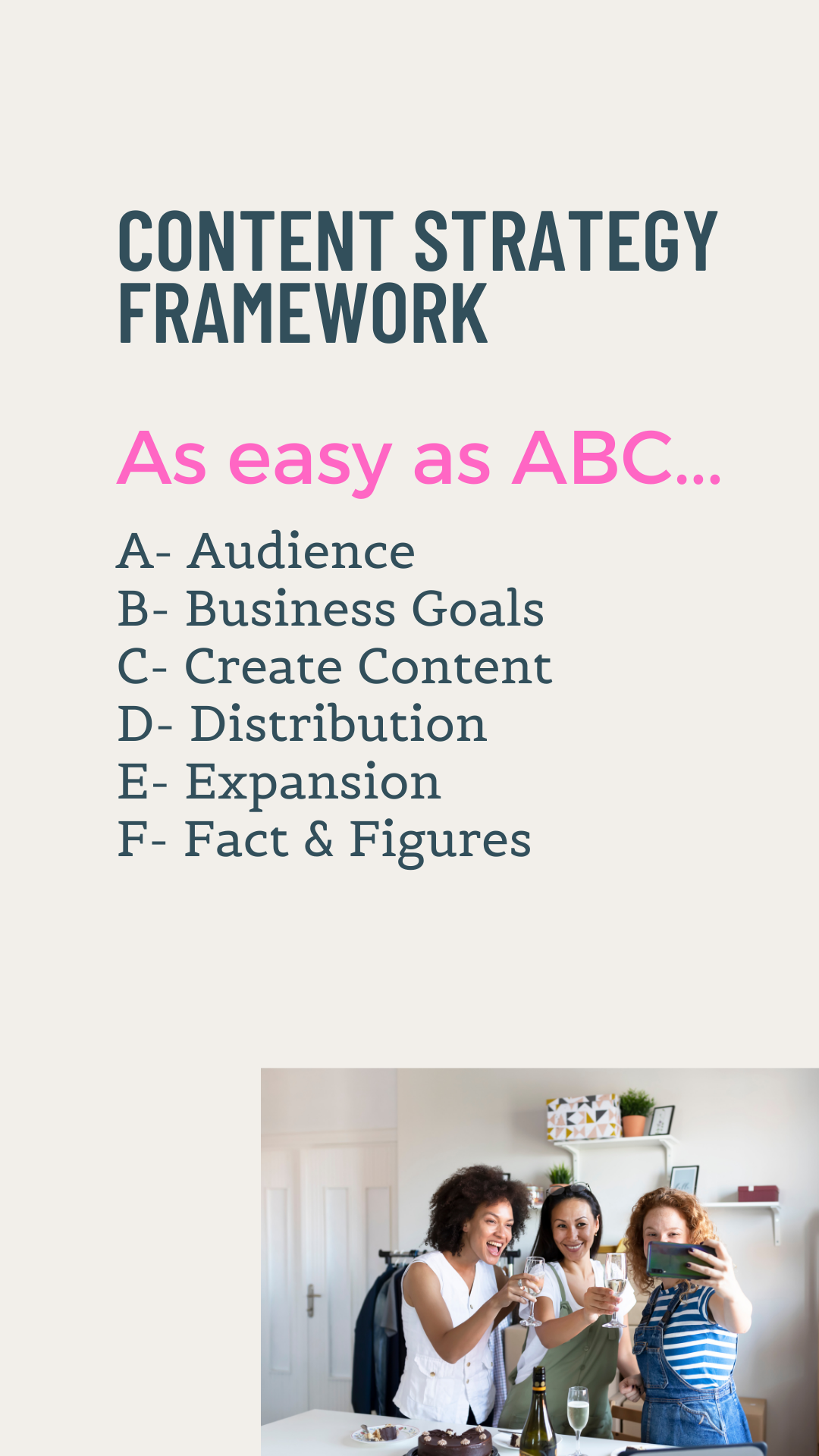

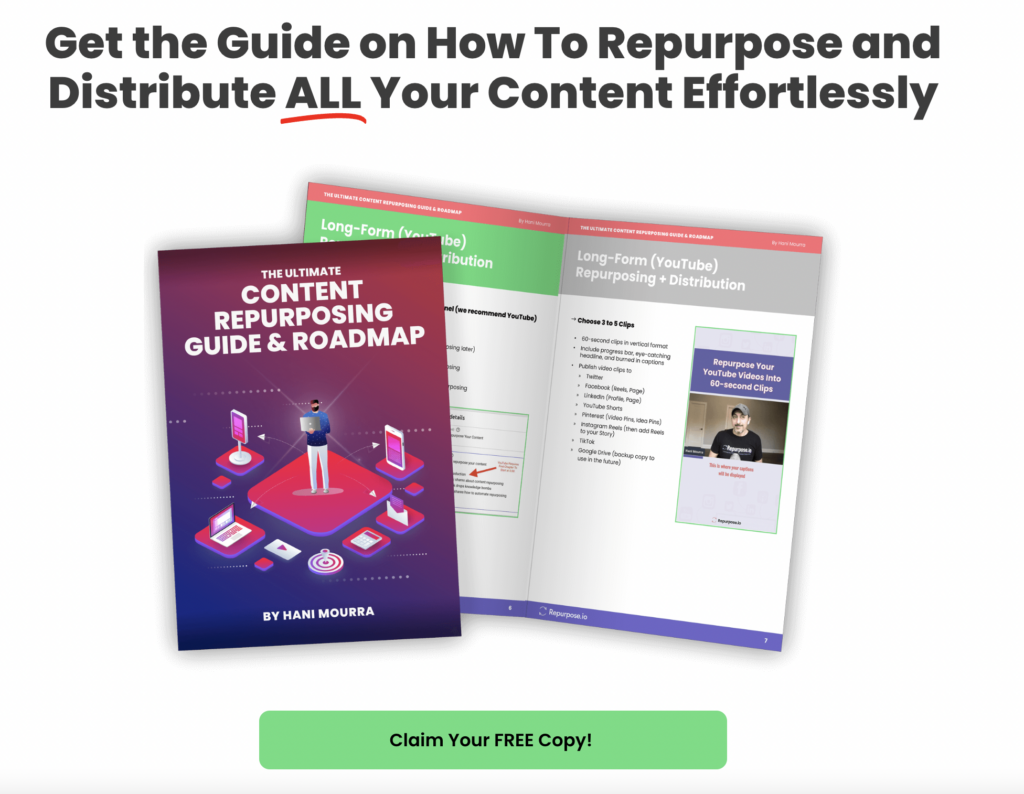

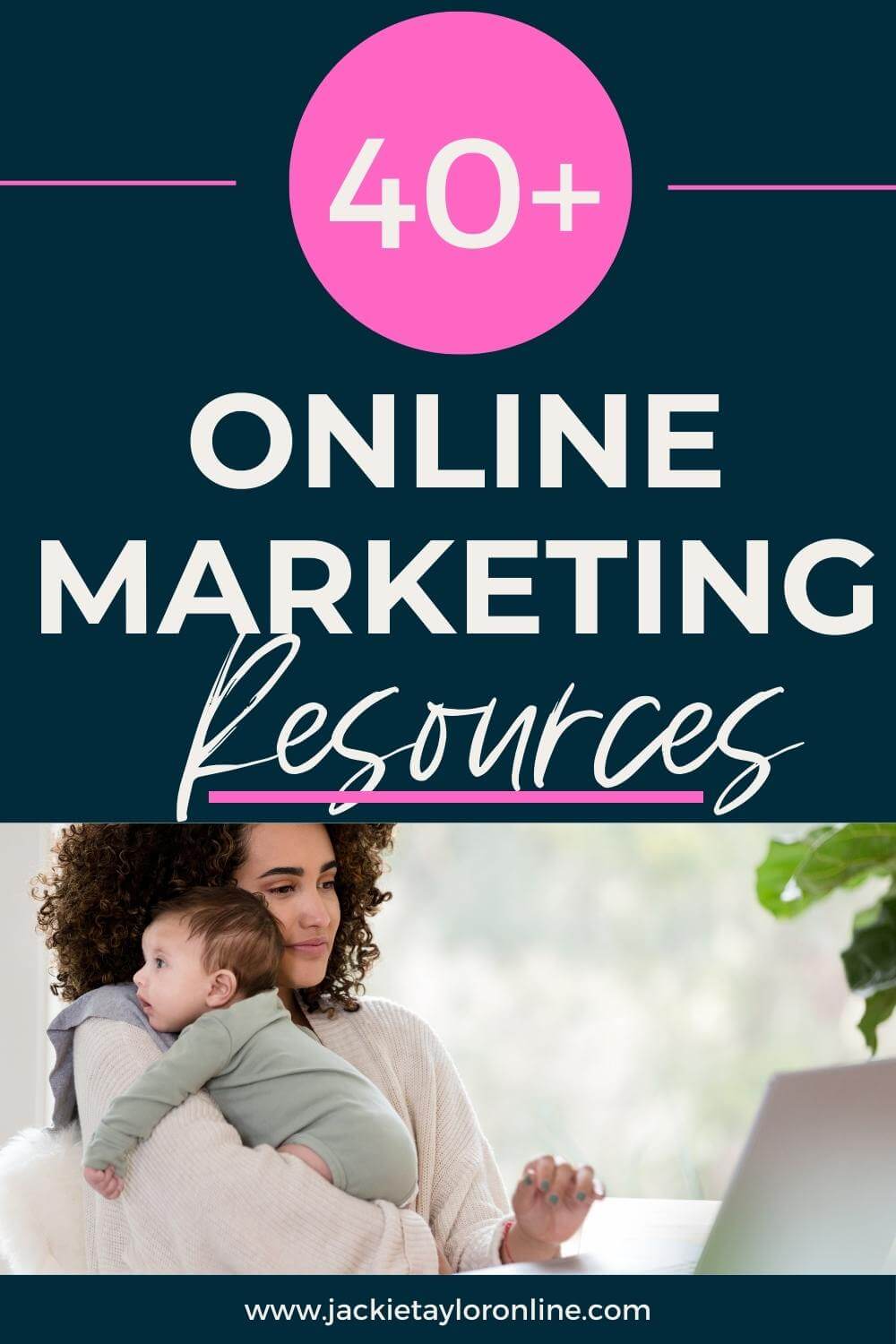
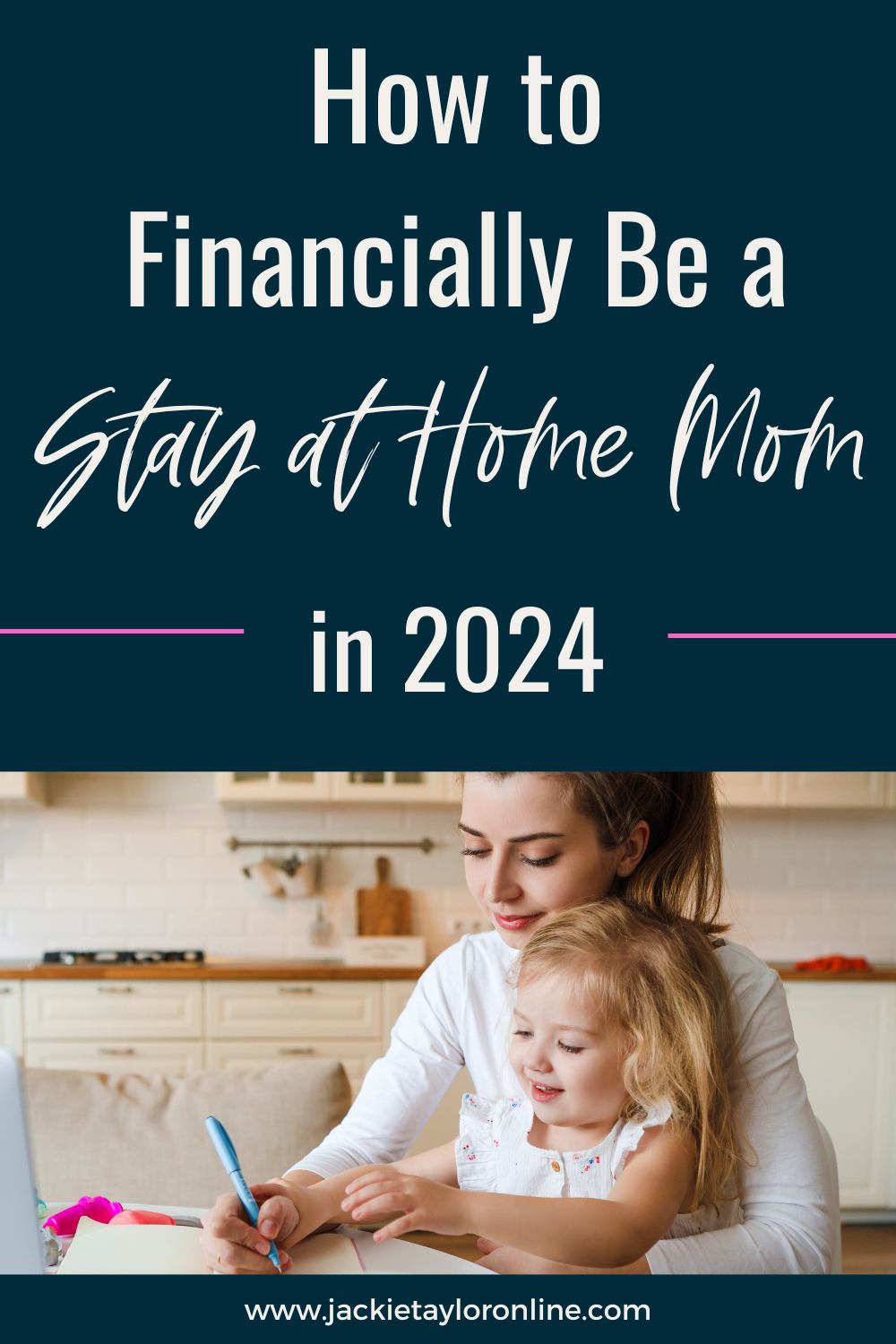
+ show Comments
- Hide Comments
add a comment